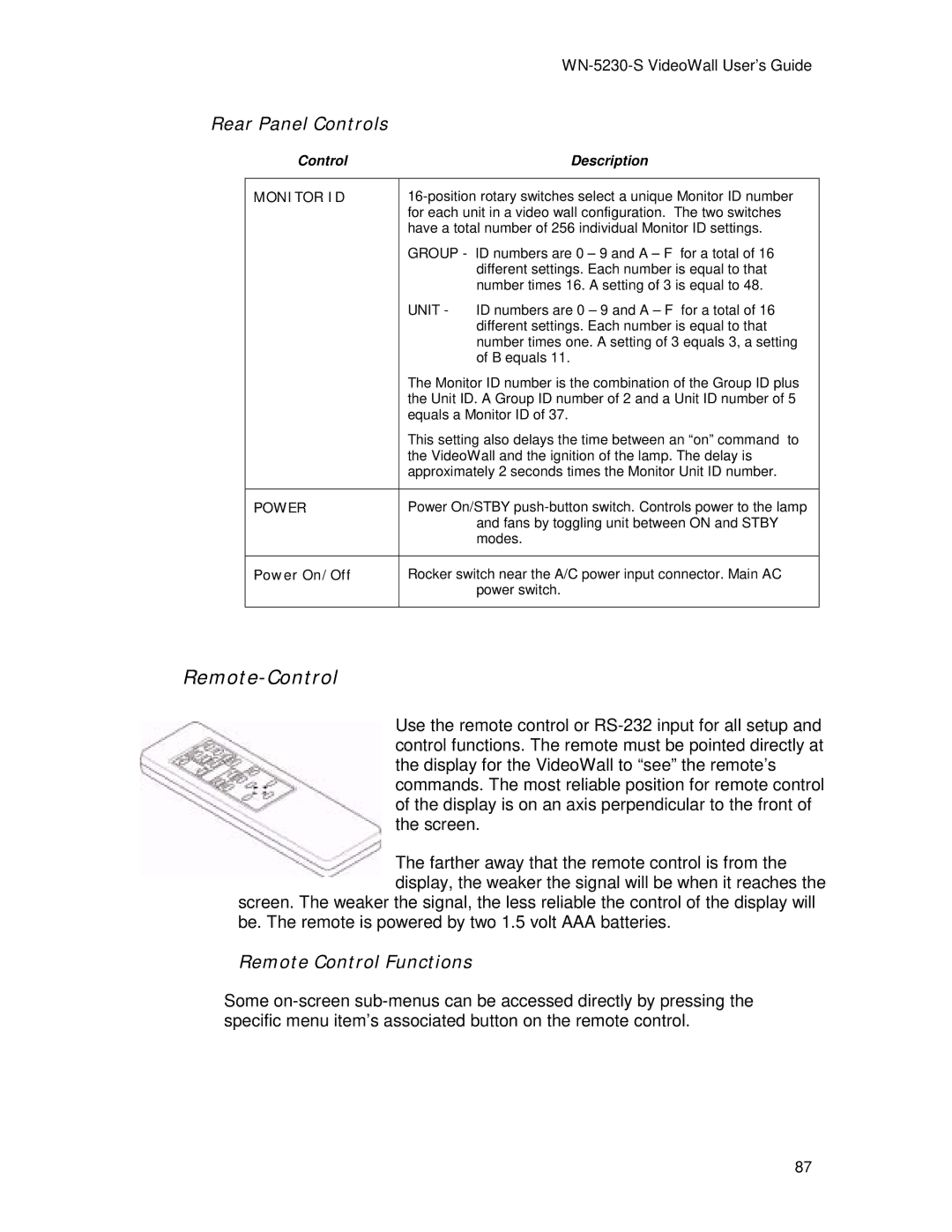
|
|
|
|
Rear Panel Controls |
|
| |
| Control |
| Description |
|
|
| |
| MONITOR ID | ||
|
| for each unit in a video wall configuration. The two switches | |
|
| have a total number of 256 individual Monitor ID settings. | |
|
| GROUP - ID numbers are 0 – 9 and A – F for a total of 16 | |
|
|
| different settings. Each number is equal to that |
|
|
| number times 16. A setting of 3 is equal to 48. |
|
| UNIT - | ID numbers are 0 – 9 and A – F for a total of 16 |
|
|
| different settings. Each number is equal to that |
|
|
| number times one. A setting of 3 equals 3, a setting |
|
|
| of B equals 11. |
|
| The Monitor ID number is the combination of the Group ID plus | |
|
| the Unit ID. A Group ID number of 2 and a Unit ID number of 5 | |
|
| equals a Monitor ID of 37. | |
|
| This setting also delays the time between an “on” command to | |
|
| the VideoWall and the ignition of the lamp. The delay is | |
|
| approximately 2 seconds times the Monitor Unit ID number. | |
|
|
| |
| POWER | Power On/STBY | |
|
|
| and fans by toggling unit between ON and STBY |
|
|
| modes. |
|
|
| |
| Power On/Off | Rocker switch near the A/C power input connector. Main AC | |
|
|
| power switch. |
|
|
|
|
Remote-Control
Use the remote control or
The farther away that the remote control is from the display, the weaker the signal will be when it reaches the
screen. The weaker the signal, the less reliable the control of the display will be. The remote is powered by two 1.5 volt AAA batteries.
Remote Control Functions
Some
87
